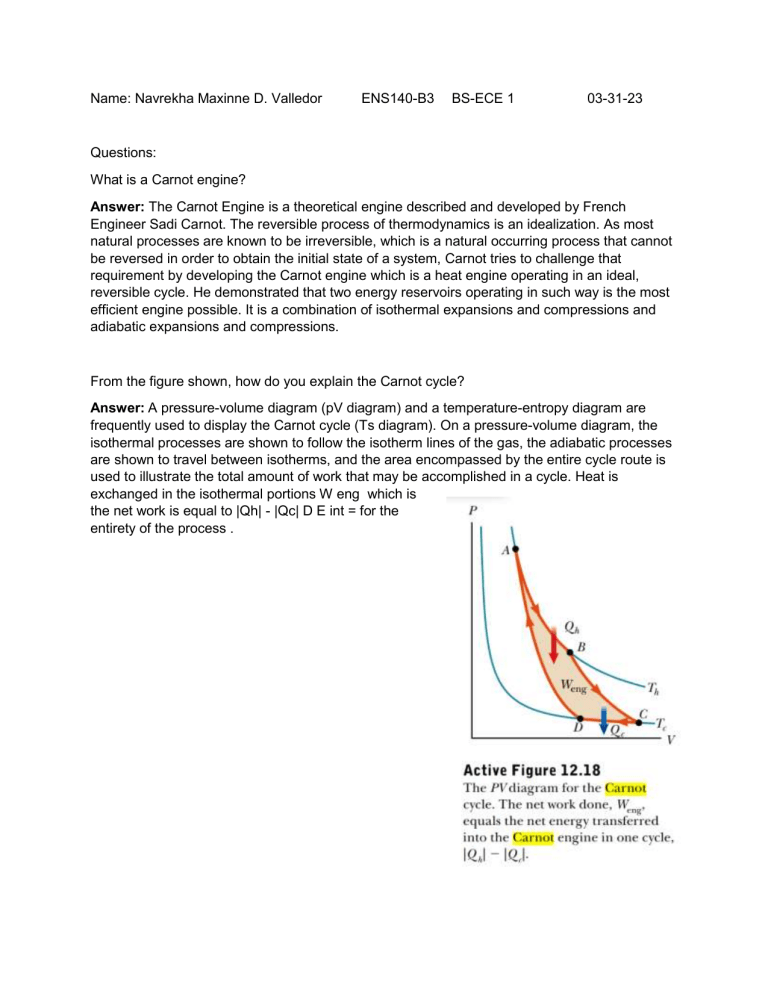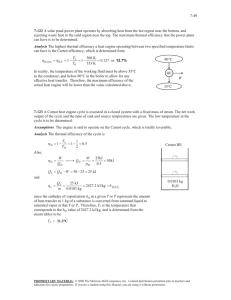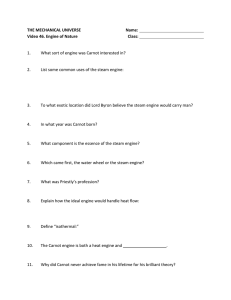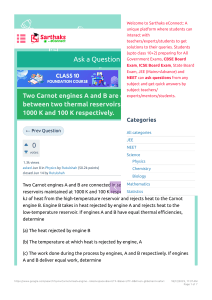
Name: Navrekha Maxinne D. Valledor ENS140-B3 BS-ECE 1 03-31-23 Questions: What is a Carnot engine? Answer: The Carnot Engine is a theoretical engine described and developed by French Engineer Sadi Carnot. The reversible process of thermodynamics is an idealization. As most natural processes are known to be irreversible, which is a natural occurring process that cannot be reversed in order to obtain the initial state of a system, Carnot tries to challenge that requirement by developing the Carnot engine which is a heat engine operating in an ideal, reversible cycle. He demonstrated that two energy reservoirs operating in such way is the most efficient engine possible. It is a combination of isothermal expansions and compressions and adiabatic expansions and compressions. From the figure shown, how do you explain the Carnot cycle? Answer: A pressure-volume diagram (pV diagram) and a temperature-entropy diagram are frequently used to display the Carnot cycle (Ts diagram). On a pressure-volume diagram, the isothermal processes are shown to follow the isotherm lines of the gas, the adiabatic processes are shown to travel between isotherms, and the area encompassed by the entire cycle route is used to illustrate the total amount of work that may be accomplished in a cycle. Heat is exchanged in the isothermal portions W eng which is the net work is equal to |Qh| - |Qc| D E int = for the entirety of the process .







